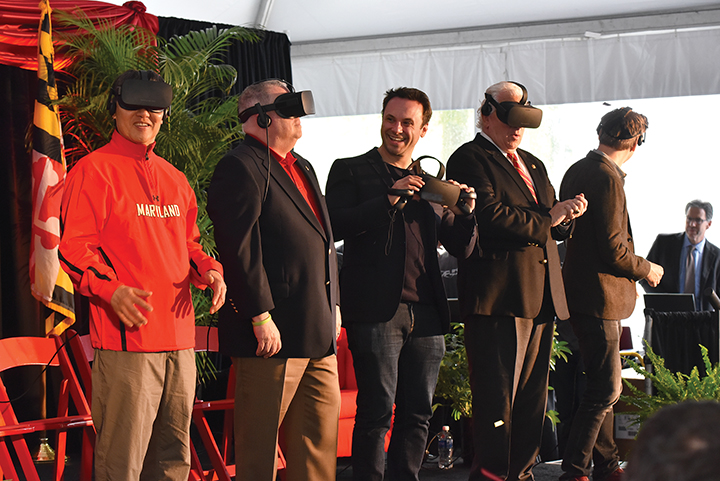The University of Maryland received a $500,000 grant, which it will use to create a center focused on immersive media, such as virtual and augmented reality.
The U.S. Department of Commerce awarded the grant to this university through its U.S. Economic Development Administration. This university plans to use the grant, as well as $639,418 of non-federal money, to launch the Mixed/Augmented/Virtual Reality Innovation Center, according to the EDA’s website.
MAVRIC will focus on connecting entrepreneurs with researchers and investors, encouraging traditionally underrepresented groups’ participation in immersive media and spreading the technology to commercial and government markets.
[Read more: Newseum guests can walk through streets of Berlin during Cold War with UMD team’s help]
MAVRIC will also focus on increasing the number of science, technology, engineering, arts and math students from both urban and rural underserved communities, according to the EDA website.
The grant is expected to be used to start at least 10 new companies in the region.
The center plans to create 20 new companies by two years after the grant ends, and 50 new companies by five years after its end.
According to a university news release, the center’s team collected 54 support letters from regional and national stakeholders, such as investors, other universities and the state.
Mid-Atlantic Crossroads, which provides high-speed access and network capabilities to participants, supports the initiative.
“MAX is proud to support MAVRIC with our robust research and technology infrastructure,” the company’s news release said. “With a strong foundation in place, MAVRIC is poised to become the east coast hub of immersive media.”
This university has been involved in immersive media technology on its campus through the Augmentarium, an interactive computer visualization lab, and the Virtual Reality Cave, a 3D simulated environment.
Also, the Brendan Iribe Center for Computer Science and Innovation, which will support virtual and augmented reality, is expected to open in 2018.
[Read more: University of Maryland welcomes its second virtual reality faculty member]
This university has also partnered with the Newseum to create an immersive virtual reality exhibit of East and West Berlin during the Cold War, which is open through December 2018.
“Innovation is a significant driver of growth for the U.S. economy, and immersive media technology is poised to disrupt several key industries,” Julie Lenzer, the associate vice president for innovation and economic development and MAVRIC principal investigator, said in the university news release. “MAVRIC is well-positioned to emerge as the east coast hub of immersive media, and we will power that drive with a community-based, collaborative approach to commercializing these technologies.”



